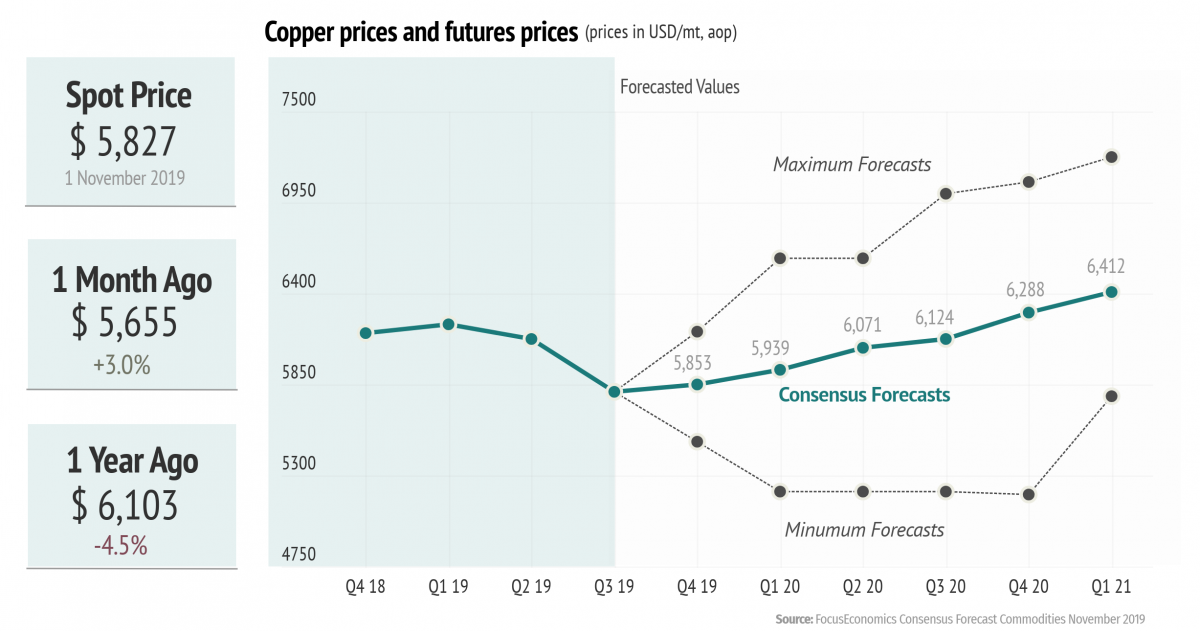Copper has acquired the nicknames “Dr Copper” and “the metal with a PhD in economics” due to its uncanny ability to diagnose the health of the broader economy. This is largely because copper has a host of industrial uses—including for electrical wiring, roofing, plumbing and industrial machinery—and because its supply is relatively stable, which means that prices are closely correlated with demand.
Economists and investors alike thus closely track the price of the commodity to infer how the economy is doing and will have been on edge when copper prices sunk to over two-year lows in late September amid heightened concerns about the Chinese economy, which consumes around one-half of the world’s copper, amid ongoing trade tensions with the United States. Despite bouncing back somewhat following disruptions to supply in Chile and optimism related to the “phase one” trade deal, copper prices traded at USD 5,827 per metric ton on 1 November, which was still down 2.1% on a year-to-date basis and 4.5% from the same day in 2018.
Looking at our projections for next year, Dr Copper indicates that a global recession does not seem to be around the corner. Our Consensus Forecast projects that copper will average USD 6,288 per metric ton in Q4 2020, comfortably above the symbolic USD 6,000 per metric ton mark. At the same time, trading patterns in the Chicago Metal Exchange and London Metal Exchange seem to suggest funds are starting to turn more bullish on copper.

Nevertheless, as highlighted by the chart above, the spread between our panelists’ projections is significant: The minimum forecast for Q4 2020 is USD 5,182 per metric ton, while the maximum forecast is USD 7,000 per metric ton. Furthermore, many analysts argue that copper prices should be trading much higher given the supply and demand outlook.
With regards to supply, uncertainty has spiked due to the tense political situation across much of Latin America, where approximately one-third of output is located. Of particular relevance are the protests which have recently engulfed Chile, the world’s largest copper producer; BHP, for example, announced on 29 October that its Escondida mine, the world’s largest, was operating at a “reduced rate” after its employees joined the anti-government protests. On top of this, supply is below capacity due to long-term under-investment.
Meanwhile, the long-term demand outlook should be bright given we will need a lot of copper if we are to succeed in decarbonizing and transitioning towards a more sustainable world: Electric cars require about three times more copper than traditional cars and the metal is also currently instrumental in producing wind turbines, solar panels and other renewable energy sources.
Given the above and fears of a global recession swirling, economists and investors will continue to keep a close eye on Dr Copper’s diagnosis of the health of the global economy.